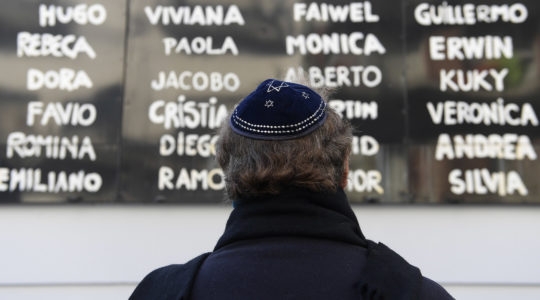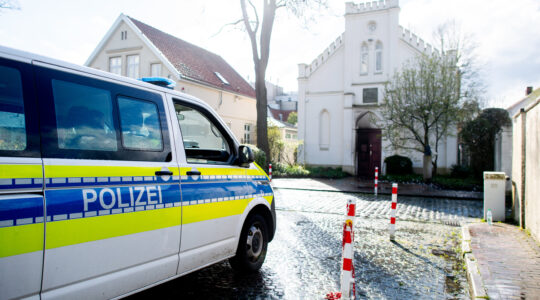
To most Americans, myself included, Selma, Alabama conjures but one thing: the Civil Rights era. Think about it: How many other Alabama towns with 20,000 inhabitants can you name?
That population figure is lower than it was in the 60s, when Selma was the site of some of the most significant events in the fight for civil rights for black Americans. And like other towns in the south, it wants desperately to trade on that history to attract tourism and revive a sagging economy.
The local Jewish community, numbering 11, is hoping to do the same and to save its 1899 synagogue building in the process. Selma’s Jews need millions to renovate their synagogue, whose current condition is pitiable, and it’s far from clear where that cash is going to come from. Their priority is to patch up a leaky ceiling which, according to this JTA piece, has been a concern since at least 2003.
The synagogue, Mishkan Israel, is located just blocks from the Edmund Pettus Bridge, where on March 7, 1965, police officers attacked civil rights demonstrators in one of the seminal events of the era. Rights leaders sought to march from Selma to Montgomery and pro-segregationist Governor George Wallace vowed to stop them. The marchers got as far as the bridge, where they were met by armed troopers. The brutal scenes of repression, played out in full view of the news media, galvanized public opinion across the nation.
Visiting Selma today is like taking a walk into the past. There’s amazing antebellum architecture, and lots of fried food, and the requisite Main Street (Broad Street, actually), now strung up with Christmas lights. But there’s also a palpable feeling of the segregated past here. There’s the country club without a single black member. There’s the public high school that is 99 percent black, the white students all shuttled off to private schools. There’s the casual references some white folks make to "the blacks" that would raise hackles in Manhattan, but no one seems to think much of here, especially if you’re over 60.
Segregation might be have been ended by federal fiat, but the cultural baggage of racial discord persists here in subtle and not so subtle ways.
On Monday, I met with most of the town’s remaining Jews, and the discussion quickly turned to their recollections of that fraught year, 1965. I was raised to see the passive resistance of the civil rights movement as one of the shining chapters in American history. And the role of northern Jews in risking life and limb to support equal rights was something I was taught to take great pride in.
But the local Jews saw those Yankees quite differently. I won’t spoil it, since I hope to have a video of our discussion up in a few days, but suffice it to say, it’s not what you might expect.





